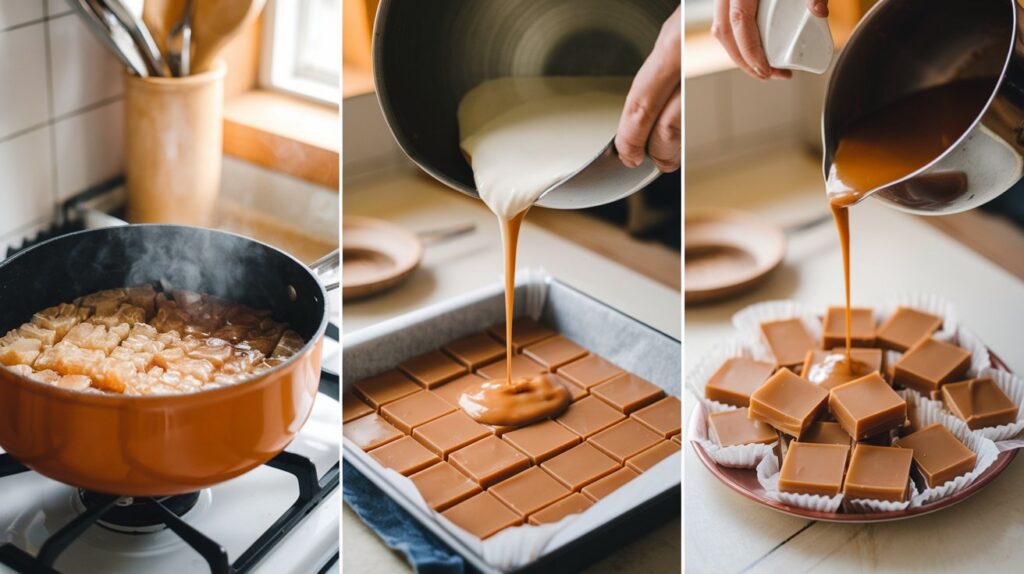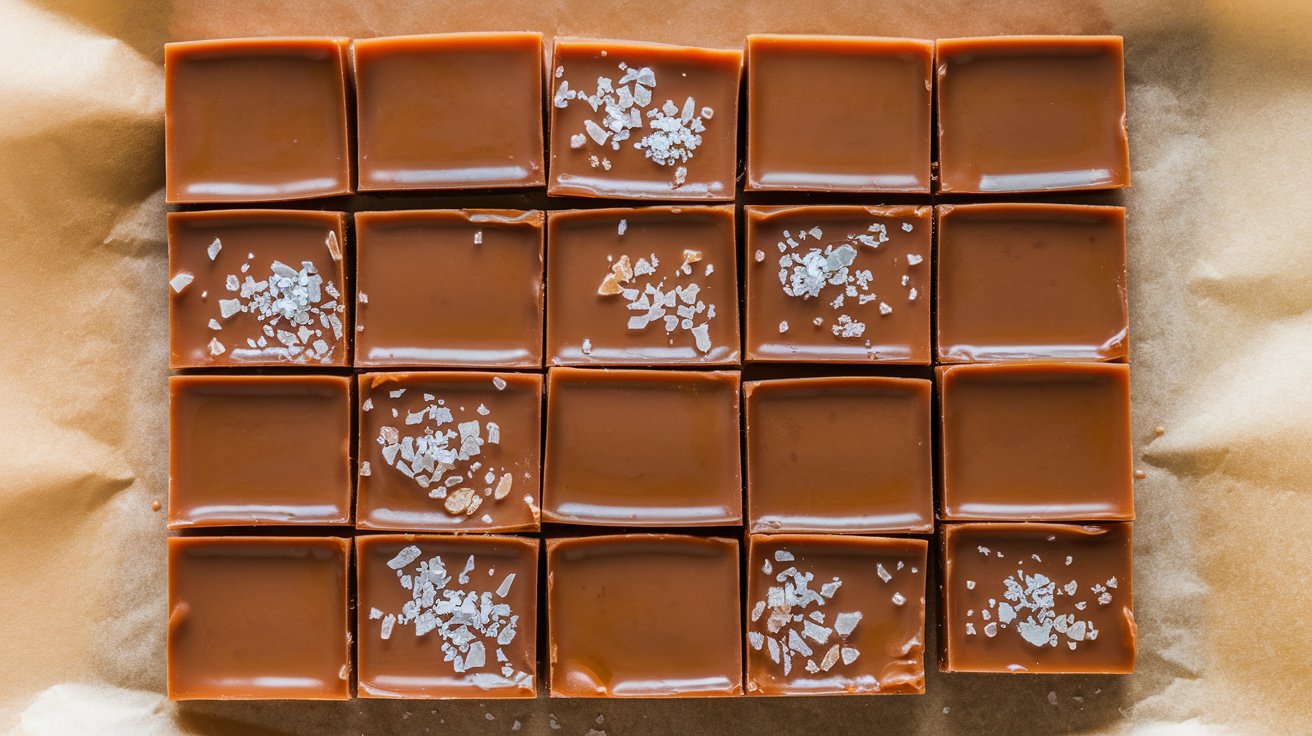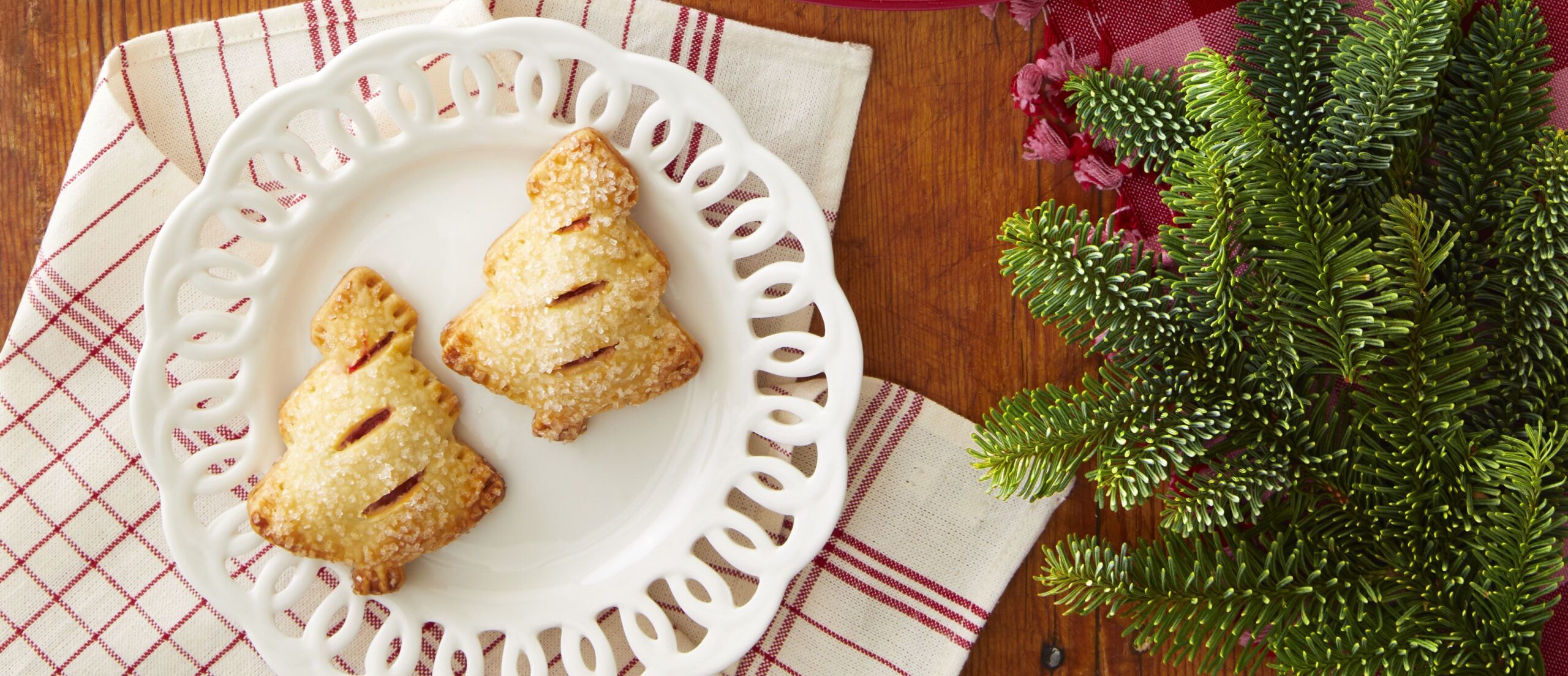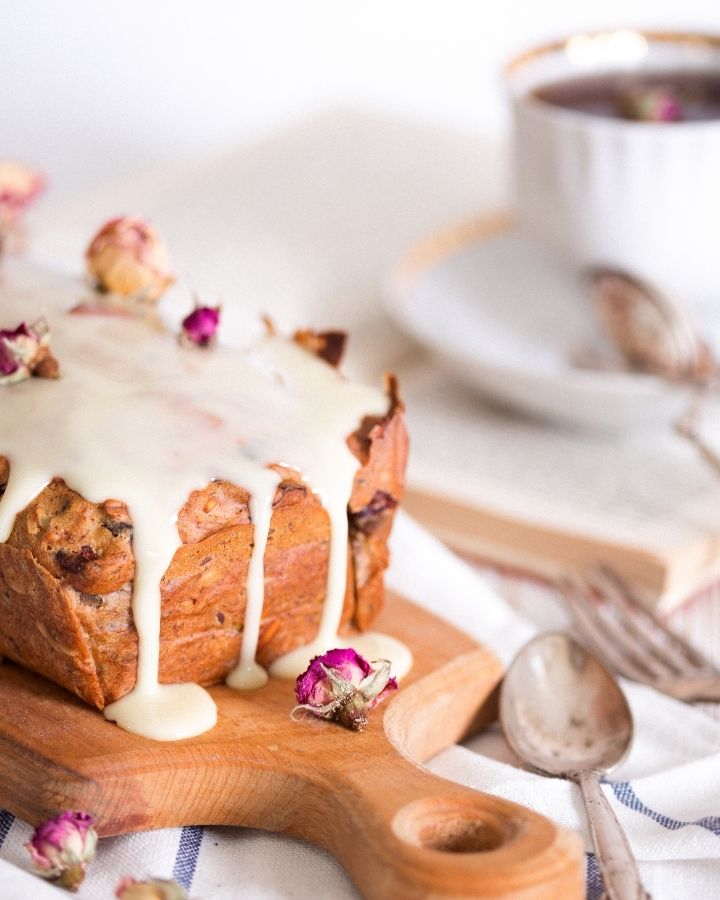Making homemade salted caramels might seem like a challenge, but with a little care and attention, you can create these rich, chewy salted caramels right in your own kitchen—without any corn syrup! Perfect for gifting or as a sweet treat to keep on hand, these caramels combine a luscious buttery flavour with a hint of sea salt, creating a melt-in-your-mouth experience that’s simply irresistible.
The History Of Homemade Salted Caramels:
Did you know? Caramel has been enjoyed for centuries, with its origins tracing back to the Arabs who first started experimenting with sugar in the Middle Ages. The word “caramel” itself comes from the Arabic word “kurmusa,” meaning ball of sweet. However, it wasn’t until the 19th century that caramel as we know it—made with sugar, butter, and cream—became popular in Europe and America. Caramel confections like these chewy caramels have been a beloved treat ever since.
Why We Don’t Use Corn Syrup:
Corn syrup is often used in caramel recipes to prevent the sugar from crystallising, giving the final product a smooth texture. However, many people prefer to avoid corn syrup due to health concerns or dietary preferences. By making caramels without corn syrup, you can enjoy a more natural treat that doesn’t rely on processed ingredients. Plus, it allows the caramel’s deep, buttery flavours to shine through without the overly sweet taste that corn syrup can sometimes impart.
Substitutes for Corn Syrup in Baking:
If you’re looking to replace corn syrup in other recipes, there are a few excellent substitutes that can achieve similar results. Honey, golden syrup, and maple syrup can all be used as natural alternatives in many baking recipes. Each brings its unique flavour profile, so you can choose the one that best complements the dish you’re preparing. Keep in mind that these substitutes might slightly alter the texture or taste of your final product, but they’re great options if you want to steer clear of corn syrup. I use Keystone Pantry Organic Brown Rice Syrup as it does not alter the taste.

Serving Suggestions:
These chewy homemade salted caramels are a treat on their own, but they also make a delightful addition to dessert platters. Serve them alongside dark chocolate squares for a contrasting flavour experience, or pair them with a hot cup of tea or coffee to balance the sweetness. You could even use them as a topping for vanilla ice cream or mix them into a batch of homemade brownies for a decadent twist.
Storing Instructions For Homemade Salted Caramels:
To keep your caramels fresh, store them at room temperature in an airtight container. They will stay soft and chewy for up to two weeks. If you live in a particularly warm or humid climate, you might want to store them in the fridge to prevent them from becoming too sticky. Just be sure to bring them back to room temperature before eating for the best texture.
Reheating Instructions:
Caramels are best enjoyed at room temperature, so there’s no need to reheat them. However, if your caramels have become a bit too firm, you can gently warm them in the microwave for just a few seconds. Be careful not to overdo it, as they can melt quickly.
How to Make Corn Syrup-Free Caramels

Chewy Homemade Salted Caramels Without Corn Syrup
Ingredients
Method
- Prepare your caramel mold: Grease an 8×8 inch baking pan with butter or cooking spray. Line with parchment paper, leaving some overhang on the sides to use as handles later. Grease the parchment paper as well. Set aside.
- In a small saucepan, heat the heavy cream and butter over medium heat, stirring frequently, until the butter is melted. Remove from heat, pour into a heatproof measuring cup and set aside
- In a medium heavy-bottomed saucepan, combine the sugar and water. Cook over medium-low heat, stirring constantly with a wooden spoon or silicone spatula, until the sugar has dissolved completely. Stop stirring and allow to come to a boil
- Continue cooking, without stirring, until the mixture reaches 320°F on a candy thermometer, about 6-8 minutes. It should be a deep amber color
- Carefully and slowly pour in the hot cream mixture while whisking constantly. Be very careful as it will bubble up. Continue to cook, stirring frequently, until it reaches 248°F, about 5-10 minutes
- Remove from heat and stir in the vanilla and salt until well combined.
- Pour the hot caramel into the prepared pan. Allow to cool at room temperature for at least 4 hours or up to overnight.
- Once cooled, lift the caramel out of the pan using the parchment paper handles. Peel off the paper and cut into 1-inch squares using a sharp knife coated in butter.
- Wrap each caramel individually in squares of parchment paper or cellophane. Store at room temperature in an airtight container for up to 2 weeks.
Notes
- Candy Thermometer: Using a candy thermometer is highly recommended to ensure you reach the correct temperature for both stages of cooking.
- Cutting the Caramel: For clean cuts, coat your knife with a bit of butter. This will help prevent the caramel from sticking to the knife.
- Variations: You can experiment by adding a pinch of cinnamon or a splash of bourbon to the caramel mixture for an interesting twist.
Conclusion:
We’d love to hear how your chewy home made salted caramels turned out! Whether you’re gifting them or enjoying them yourself, these caramels are sure to impress. Share your thoughts in the comments below, and don’t forget to subscribe for more delicious recipes and tips straight to your inbox.
Also try our Classic Pecan Pie Recipe: A Deliciously Rich and Nutty Dessert
Can I use salted butter instead of unsalted butter?
Yes, you can use salted butter, but you may want to reduce the amount of added sea salt to avoid making the caramels too salty.
What can I use instead of a candy thermometer?
If you don’t have a candy thermometer, you can test the caramel by dropping a small amount into a glass of cold water. If it forms a firm ball, it’s ready.
My caramel turned out grainy. What went wrong?
Graininess can happen if the sugar isn’t fully dissolved before it starts boiling. Make sure to stir until the sugar is completely melted before allowing it to boil.
How can I prevent my caramels from sticking to the parchment paper?
Grease the parchment paper with butter or cooking spray before pouring the hot caramel. This helps prevent sticking and makes it easier to lift and cut the caramels.
What type of sea salt is best for these caramels?
A flaky sea salt, like Maldon, works well for topping caramels. It adds a subtle crunch and enhances the caramel’s flavour without overpowering it.




